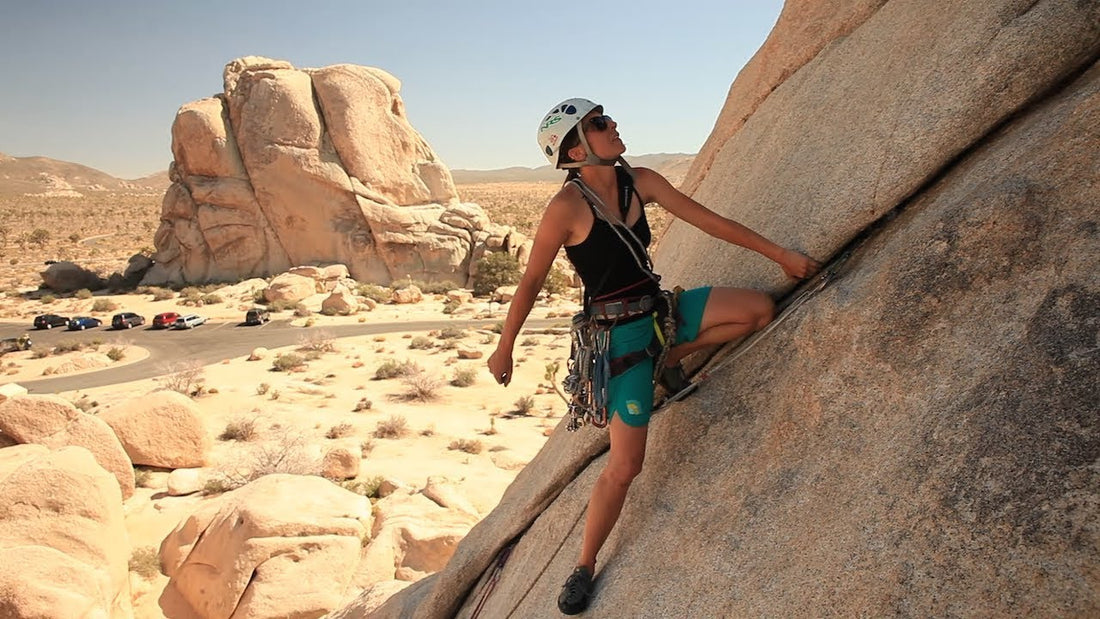
Silent Ascents: How Deaf Climbers Are Rewriting the Rulebook
Share
Introduction: A Quiet Revolution on the Wall
In a sport where communication is often considered essential—shouting beta, warning of falling rocks, or coordinating belay commands—deaf climbers are proving that climbing doesn’t require sound to excel. From adaptive techniques to groundbreaking competitions, the deaf climbing community is reshaping how we think about accessibility, communication, and strength in the vertical world.
This article explores how deaf climbers are breaking barriers, innovating new systems, and inspiring a more inclusive climbing culture.
1. Communication on the Wall: How Deaf Climbers Adapt
A. Visual Beta & Tactile Signals
-
Hand signals replace verbal cues—pre-established gestures for "slack," "take," and "falling."
-
Laser pointers help route-setters highlight holds for deaf competitors.
-
Vibrating belay devices (like the "Deaf Climbing System") alert climbers to rope tension.
B. The Power of Eye Contact & Body Language
-
Belayers use exaggerated movements to signal readiness.
-
Climbers rely on visual focus rather than verbal encouragement.
C. Technology Bridging the Gap
-
Smartwatches with haptic feedback vibrate for time alerts or safety warnings.
-
AR glasses could soon display real-time route beta without speech.
2. Deaf Climbers Who Are Changing the Game
A. Maureen "Mo" Beck – The Pioneer
-
One of the first deaf climbers to compete at the elite level.
-
Advocates for inclusive climbing gyms with visual safety systems.
B. Sean O’Neill – The Mountaineer
-
First deaf climber to summit Everest (2007).
-
Uses written notes and gestures for expedition teamwork.
C. The Rise of Deaf Climbing Competitions
-
Events like DeafClimb Championships feature modified rules for equal competition.
-
Judges use flags instead of whistles to start/stop climbs.
3. The Science Behind Deaf Climbers’ Unique Strengths
A. Enhanced Visual-Spatial Awareness
-
Studies suggest deaf individuals often develop sharper peripheral vision, aiding route-reading.
B. Tactile Sensitivity & Grip Strength
-
Some research indicates increased finger sensitivity from reliance on touch.
C. Noise-Free Focus
-
Without auditory distractions, many deaf climbers report deeper concentration on movement.
4. How Gyms & Competitions Are Becoming More Inclusive
A. Deaf-Friendly Climbing Gyms
-
Color-coded hold systems replace verbal route instructions.
-
LED light belay signals (green = go, red = stop).
B. Adaptive Climbing Clinics
-
Organizations like Paradox Sports train staff in ASL and visual teaching methods.
C. The Push for Standardized Accessibility
-
Petitions for IFSC (International Climbing Federation) to add deaf categories.
-
Captioning for climbing films and livestreams.
5. What Hearing Climbers Can Learn from the Deaf Community
A. Rethinking Reliance on Verbal Cues
-
Simplifying communication benefits all climbers in noisy environments.
B. The Value of Silent Sends
-
Many deaf climbers describe a purer, more meditative climbing experience.
C. Advocacy in Action
-
Supporting captioning, visual alerts, and ASL-inclusive events.
Conclusion: The Future of Climbing is Inclusive
Deaf climbers aren’t just participating—they’re leading a revolution in adaptive techniques and accessibility. Their innovations are making climbing safer and more welcoming for everyone, proving that the essence of the sport lies not in sound, but in movement, trust, and perseverance.
